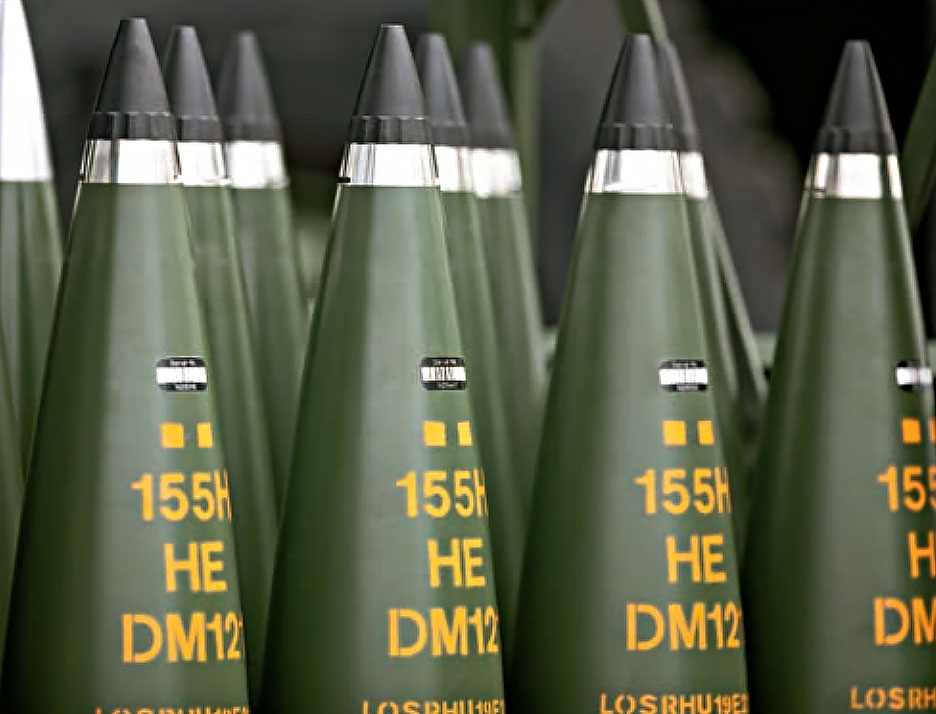Russia producing three times more artillery shells than US and EU for Ukraine
Russia is producing around 250,000 artillery shells monthly or 3,000,000 a year, compared to just 1.2 million annually from the US and Europe combined for Ukraine, per CNN data.

Russia’s defense industry is producing over twice as many shells per month as the US and the EU combined for Ukraine. According to NATO intelligence estimates shared with CNN, Russia is churning out around 250,000 artillery munitions monthly, or 3 million annually. In contrast, the US and European nations collectively have the capacity for only about 1.2 million shells per year destined for Ukraine’s forces.
The shortfall comes at a critical juncture, with US funding stalled in Congress by Republicans for months and Russia recently capturing the Ukrainian city of Avdiivka amid Ukraine’s shell shortage, potentially gaining battlefield momentum. Additionally, North Korea supplies Russia with a full-range of artillery ammunition.
Czech security adviser says funding for 800,000 shells for Ukraine not yet fully secured
Russia uses five times more shells daily than Ukraine
According to CNN, the US military aimed to produce 100,000 artillery rounds monthly by the end of 2025, less than half of Russia’s output, but this target is now unattainable due to stalled funding in Congress, a senior Army official said. A senior NATO official emphasized that the conflict in Ukraine is a “production war,” with the outcome depending on each side’s equipment.
Currently, Russia is firing around 10,000 shells daily, compared to Ukraine’s 2,000, with even greater disparities in some areas along the 600-mile front, a European intelligence official noted to CNN.
Artillery munition production in Russia and the West
Russia’s heightened production stems from running factories around the clock on rotating shifts, while expanding its defense workforce to 3.5 million personnel, CNN says. It is also importing ammunition from Iran and North Korea to supplement domestic output. Analysts suggest this manufacturing advantage could enable another Russian offensive, though Western officials remain skeptical of major territorial gains in the short-term.
UK intel: Russia boosts military output in 2023, will have materiel edge over Ukraine in 2024
European nations are striving to increase ammunition production, with plans for new factories in Germany and Ukraine. However, US military goals of 100,000 artillery rounds monthly by late 2025 now appear unrealistic without Congressional funding consistently stalled by US Congress Republicans. Intelligence assessments indicate neither side is positioned for major advances soon, but Russia’s production capacity raises concerns about its long-term sustainability in the conflict.
US and Western officials insist capitalist nations will eventually outproduce Russia’s managed economy model. However, some caution Moscow currently holds the upper hand, raising potential pressures on Ukraine’s negotiating position if Western aid falters. The artillery disparity has emerged as a pivotal factor that could shape the broader trajectory of the war.
War outcome may depend on artillery shell quantities
The US and its allies have provided Ukraine with advanced systems like the M-1 Abrams tank and soon, F-16 fighter jets. However, military analysts believe the outcome of the war will likely depend on artillery shell quantities. A NATO official highlighted that munitions, particularly artillery shells, are crucial, as Russia has a significant production advantage and battlefield superiority in this area.
The senior NATO official, speaking to CNN, stated that Russia is also producing 115 to 130 long-range missiles and 300 to 350 one-way attack drones based on the Shahed-type drones – an Iranian model – each month. While Russia had a stockpile of thousands of long-range missiles before the war, it has now dwindled to around 700, according to the official.
Read more:
- Czech security adviser says funding for 800,000 shells for Ukraine not yet fully secured
- Norway allocates $153 million to Czech-led artillery initiative for Ukraine
- UK intel: Russia boosts military output in 2023, will have materiel edge over Ukraine in 2024
- US Treasury: Russia’s economy under “considerable strain” due to its war in Ukraine
- Macron backs Czech plan to supply Ukraine with 800,000 artillery shells
- Borrelll insists EU intends to send 1,000,000 shell pledge to Ukraine even if initial March timeline not met



